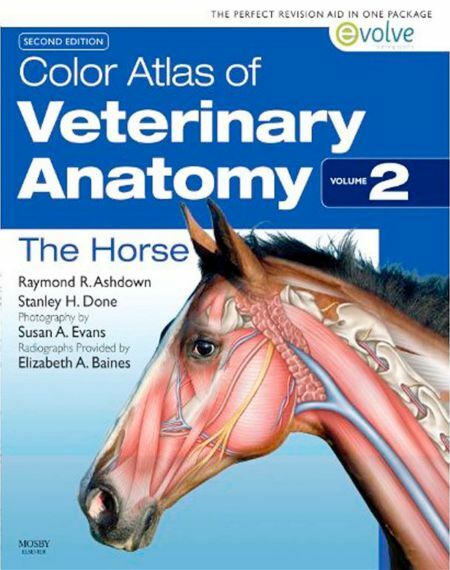This book Color Atlas of Veterinary Anatomy The Horse – Volume 2, 2nd Edition is intended for veterinary students and practising veterinary surgeons.
Color Atlas of Veterinary Anatomy The Horse – Volume 2, 2nd Edition

Important features of topographical anatomy are presented in a series of full-colour photographs of detailed dissections. The structures are identified in accompanying coloured line drawings, and the nomenclature is based on that of the Nomina Anatomica Veterinaria (1992). Latin terms are used for muscles, arteries, veins, lymphatics and nerves, but anglicized terms are used for most other structures. When necessary, information needed for interpretation of the photo-graphs is given in the captions. Each section begins with photographs of regional surface features taken before dissection, and complementary photographs of an articulated equine skeleton illustrate the important palpable bony features of these regions. The dissections and photographs have been specially prepared for this book.
The horses used for this work were ponies of various ages and types (two stallions, one gelding, three mares and several colt foals). The specimens were embalmed, for the most part, in the standing position using methods routinely employed in the Department of Anatomy at the Royal Veterinary College. Every effort was made to ensure that the final position corresponded to that of normal level standing. In four cases red neoprene latex was injected into the arteries and blue neoprene latex was also injected into the veins of the pregnant mare.
The dissections follow the pattern of prosections that were used for teaching at the Royal Veterinary College for many years. The aim of these dissections and photographs is to reveal the topography of the animal as it would be presented to the veterinary surgeon during a routine clinical examination. Therefore, lateral views pre-dominate and we have, as far as possible, avoided photographs of parts removed from the body or the use of views from unusual angles, or of unusual body positions. It is our earnest hope that this book will enable students and veterinary surgeons to see, beneath the outer surface of the animals entrusted to their care, the muscles, bones, vessels, nerves and viscera that go to make up each region of the body and each organ system.
A significant difference between this and previous editions of the volume is the addition of radiographs and scans which are placed in a new chapter at the end of the book. A second major difference is the inclusion of clinical notes at the beginning of each main chapter. These notes highlight the areas of anatomy which are of particular clinical significance. Finally, over 100 self-assessment questions are available online with this new edition.
Password: pdflibrary.net
